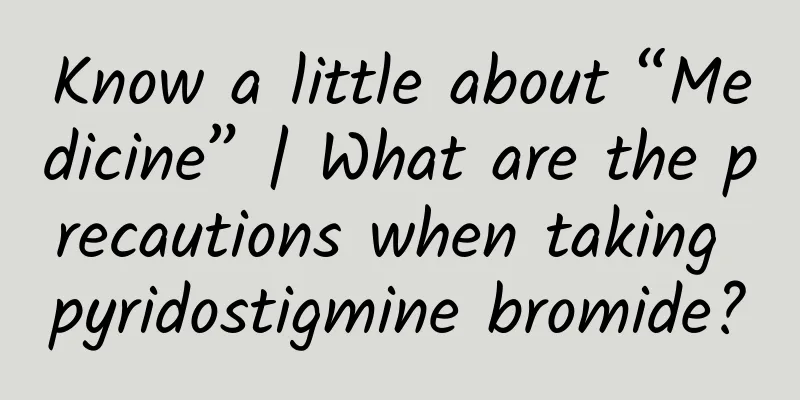[Health Lecture] Stop sneezing with "spring" and say goodbye to allergic rhinitis
![[Health Lecture] Stop sneezing with "spring" and say goodbye to allergic rhinitis](/upload/images/67f149351b33d.webp)
|
1. What is allergic rhinitis Allergic rhinitis (AR) is a non-infectious chronic inflammatory disease of the nasal mucosa mediated mainly by immunoglobulin E (IgE) after atopic individuals are exposed to allergens (allergens). AR is a common chronic nasal disease in clinical practice, affecting 10% to 20% of the world's population and has become a global health problem. 2. Under what circumstances might you be suffering from allergic rhinitis ①Symptoms: 2 or more paroxysmal sneezing, watery nasal discharge, nasal itching and nasal congestion, which last or accumulate for more than 1 hour per day, and may be accompanied by eye symptoms such as tearing, itchy eyes and red eyes; ②Signs: Common nasal mucosal paleness and edema, watery nasal secretions; ③Allergen detection: At least 1 allergen SPT and/or serum specific IgE are positive, or the nasal provocation test is positive. 3. Does nasal congestion and runny nose necessarily mean allergic rhinitis? Of course not, it should be differentiated from the following diseases: ① Vasomotor rhinitis: It is a non-allergic, non-infectious inflammation of the nasal mucosa, with sneezing, runny nose, nasal itching and nasal congestion as the main symptoms. Temperature changes, gas stimulation and emotional fluctuations can induce the disease. ② Non-allergic rhinitis with eosinophilia syndrome: There are symptoms such as sneezing and runny nose, but the immunological examination of allergens is negative, and a large number of eosinophils are found in the nasal secretions. ③ Infectious rhinitis: Inflammation in the nasal cavity caused by bacterial or viral infection. ④ Hormonal rhinitis: Long-term inappropriate nasal medication or side effects of medications for other diseases is also a type of chronic rhinitis. It is mainly characterized by persistent bilateral nasal congestion and possible dryness and discomfort in the nose. ⑤Medicinal rhinitis: The long-term effects of inappropriate nasal medication and the side effects of medications caused by the treatment of other diseases are also a type of chronic rhinitis. The main subjective symptoms are bilateral persistent nasal congestion, and there may be dryness and discomfort in the nose. 4. Who makes us sneeze all the time? AR is a multifactorial disease caused by the interaction between genes and the environment. The specific causes are: 1. Allergens: ① Inhaled allergens: such as pollen, mango, catkins, many Anacardiaceae plants, many Moraceae plants, mugwort, ragweed, dandelion, tuberose, etc. ② Food allergens: such as crustacean seafood, eggs, milk, soybeans, coffee and other foods containing high-protein foods and spicy foods. ③ Drug allergens: such as aspirin, penicillin, contraceptives, etc. ④ Contact allergens: chemical agents, such as hair dyes, lipsticks, pesticides, paints, alcohol, spices, rubber, gasoline, etc. Animals, such as mosquitoes, bedbugs, cockroaches, fleas, mites, midges (small black bugs), animal fur, and feces produced by insects, etc.; ⑤ Others, such as leather, fiber, cold, heat, etc. 2. Risk factors: ① Genes and family history. ② Environmental factors: mainly active or passive smoking, increased exposure to urban suspended particulate matter, occupational factors, nutritional factors, climate factors, exposure to animal allergens, etc. In terms of time, AR shows seasonal variation, with peaks in May and August-September. In terms of space, dust mites have the highest sensitization rate in the south, while mugwort, ragweed and dandelion are the most common allergens in the northwest. 5. Are there any other symptoms of allergic rhinitis? In addition to nasal symptoms, AR also has a series of other accompanying symptoms, so we must pay attention! 1. Bronchial asthma 2. Allergic conjunctivitis 3. Chronic sinusitis 4. Upper airway cough syndrome 5. Secretory otitis media 6. Sleep disorders 7. Atopic dermatitis 6. How to draw a clear line between allergic rhinitis and allergic rhinitis? The treatment of AR should combine prevention and treatment, following the principle of four in one. Prevention: (i) Avoid contact with allergens: pay attention to the hygiene of the living environment, reduce the number of dust mites indoors; avoid allergens (including seasonal pollen and the allergens mentioned above); (2) Improve your immunity: A reasonable work and rest schedule, avoiding fatigue, and strengthening your physical exercise will help improve your immunity. (III) Health education: Provide health education to AR patients, including psychological counseling, recommend popular science articles or videos about AR, help patients build confidence in recovery, and encourage patients to actively correct some lifestyles and habits. treat: 1. Drug treatment (Western medicine): ① Antihistamines: A. Representative oral drugs include: loratadine, cetirizine, levocetirizine, desloratadine, etc.; B. Representative nasal medications include: Azelastine hydrochloride nasal spray, Levocabastine hydrochloride nasal spray ② Glucocorticoid drugs: A. Representative drugs for intranasal use include: beclomethasone dipropionate nasal spray and fluticasone propionate nasal spray. B. Representative oral drugs: fluticasone propionate, budesonide, beclomethasone propionate, triamcinolone acetonide, betamethasone, etc. ③ Leukotriene receptor antagonists: Montelukast sodium tablets. ④ Mast cell stabilizers: Cromolyn sodium, Tranilast. ⑤ Intranasal decongestants: mainly furosemide nasal drops, xylometazoline nasal spray, oxymetazoline nasal drops, etc. ⑥ Intranasal anticholinergic drugs: ipratropium bromide aerosol 2. Immunotherapy Immunotherapy induces clinical and immune tolerance with long-term effects and can prevent the development of allergic diseases. Standardized allergen vaccines should be used. 3. Traditional Chinese Medicine Treatment Traditional Chinese medicine advocates syndrome differentiation and treatment. AR belongs to the category of "rhinorrhoea" in traditional Chinese medicine. Its common syndromes are lung qi deficiency and cold syndrome, spleen qi deficiency syndrome, kidney yang deficiency syndrome and lung meridian latent heat syndrome. It can be treated with Chinese medicine, acupuncture and moxibustion. (IV) Surgical treatment: This method is used for patients whose nasal congestion symptoms have not improved after medication or immunotherapy, and who have obvious physical signs and affect their quality of life; patients with obvious anatomical variations in the nasal cavity and functional disorders; patients with chronic rhinosinusitis and nasal polyps, and patients who are ineffective with medication. It is worth noting that surgical treatment is not a routine treatment for AR. Surgical treatment methods: 1. Vidian nerve section 2. Vidian nerve branch section 3. Anterior ethmoid nerve section We recommend the minimally invasive therapies that are currently widely used and have obvious effects: blockade and radiofrequency therapy of the sphenopalatine ganglion and stellate ganglion. For details, please consult the pain department. 5. Nasal irrigation Nasal saline irrigation is a safe, convenient and inexpensive auxiliary treatment method. The nasal irrigation devices and methods currently used in clinical practice mainly include nasal irrigation, spray and atomization, and the irrigation fluids include physiological saline, deep sea saline and hypertonic saline. Nasal irrigation can be used as an alternative treatment for AR during pregnancy. References: 1. "Guidelines for the diagnosis and treatment of allergic rhinitis in China 2022" 2. "Radiofrequency analgesia therapy" edited by Lu Zhenhe, Fu Zhijian, and Chen Jinsheng 3. "Acupuncture application anatomy and clinical practice" by Li Shiliang 4. "Stellate ganglion block therapy" edited by Liu Xiaoli About the author Lu Qianhua is an anesthesiologist at Baoding Second Central Hospital. He has studied at the Pain Department of the China-Japan Friendship Hospital and is a member of the Pain Branch of the Chinese Medical Doctor Association. |
Recommend
What should you pay attention to after miscarriage
Miscarriage refers to the spontaneous abortion of...
Dietary considerations for a big belly during pregnancy
Many mothers who have just become pregnant will b...
Can I eat grapefruit during confinement after childbirth?
Diet is very important during the confinement per...
Jelly-like discharge during late pregnancy
The late pregnancy is a very important period. Th...
What are the signs of labor in late pregnancy?
Many pregnant women are at the age of giving birt...
What to do if your milk increases after giving birth
Breast engorgement is a common phenomenon for bre...
What should pregnant women do if they accidentally eat angelica?
Pregnant women should pay attention to their diet...
15-year-old "weight-loss girl" dies, weighing only 24.8 kg! Family members are heartbroken!
Today, "the girl who lost weight for love pa...
The blood vessels that the human body fears most are blocked! Many cerebral infarctions and strokes are related to them! Teach you 4 ways to improve carotid artery plaques
Carotid artery, the blood vessel that the human b...
Chronic atrophic gastritis, relieving symptoms, reducing the risk of worsening, and things to note when taking medication
A friend asked Huazi how to treat chronic atrophi...
Pictures of female folliculitis
Folliculitis is an inflammation of the hair folli...
I've been slacking off all day at work, why am I still so tired?
Have you ever had such an experience of "sla...
Can I use an electric blanket when I'm pregnant?
Electric blankets have the function of heating an...
What should be checked one month after induced abortion?
In today's society, because the pace of life ...
How do women go through menopause?
Menopause is a special period for women, during w...









